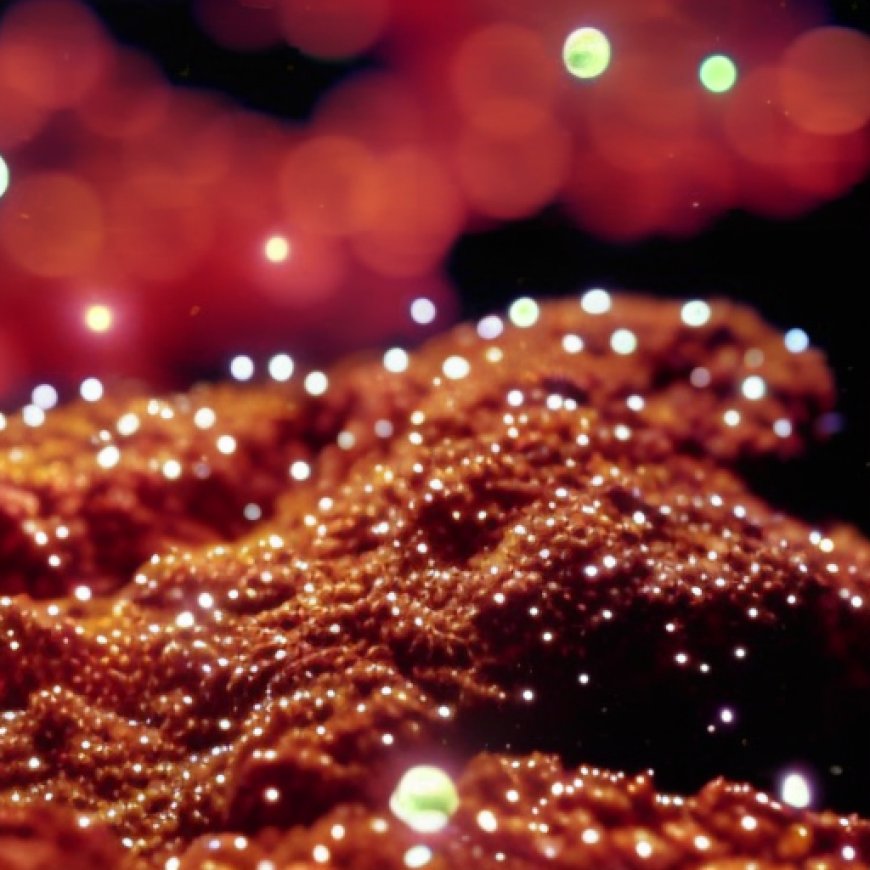Glitter In Our Waters Is Seriously Impacting The Growth Of Vital Organisms
Glitter In Our Waters Is Seriously Impacting The Growth Of Vital ... IFLScience


Glitter’s Impact on Aquatic Bacteria Growth

Glitter is everywhere: clothing, holiday decorations, and bodily crevices that aren’t appropriate to mention. Inevitably, it’s made its way into waterways, where new research suggests it impairs the growth of key aquatic bacteria.
Some scientists have already called for glitter to be banned, as it’s made up of non-biodegradable microplastics. Too small to be filtered out during wastewater treatment, glitter has spread into rivers and oceans, its sparkly appearance a façade for the damage it can cause to aquatic life when it gets there.
The Impact on Cyanobacteria
The latest victim of this shimmery menace? Cyanobacteria, more commonly known as blue-green algae. A key member of aquatic ecosystems, they play a significant role in both biogeochemical processes (think nitrogen-fixing and the oxygen cycle) and food webs.
Researchers at the Center for Nuclear Energy in Agriculture in Brazil wanted to find out the precise effect of glitter on cyanobacterial growth, which in turn could provide clues as to its wider environmental impact. “Whatever affects cyanobacteria will indirectly affect other organisms in the same environment,” said Mauricio Junior Machado, first author of the study, in a statement.
The Study
Over the course of 21 days, the team monitored the growth of two different strains of cyanobacteria in five different concentrations of glitter. Every three days, they used a light-based technique, known as spectrophotometry, to measure cellular growth rates.
Both strains were negatively affected by higher concentrations of glitter, experiencing not just reductions in growth rate, but also increased cell biovolume. The latter is one way in which cells can respond to stress – a relatable feeling if you’ve ever made the mistake of giving kids access to glitter.
“We found that increasing the amount of glitter raised the biovolume of the cyanobacterial cells and boosted stress to levels that even impaired photosynthesis,” commented Machado. Like plants, cyanobacteria get their energy via photosynthesis; if this process is affected, so is their overall function. In turn, this could have a negative effect on the other elements of the environment that rely on blue-green algae.
The Importance of Reducing Glitter Use
Given the potential widespread impact on aquatic ecosystems, the researchers hope that the study will highlight to policymakers and the general public the importance of reducing glitter use and, therefore, microplastic pollution.
“Glitter is sold for use in festivities, where people spare little thought for the environmental problems it causes,” said another of the researchers, Marli de Fátima Fiore. “However, it’s necessary to bear in mind that microplastics contaminate and damage marine and freshwater ecosystems, which are extremely important to our lives, and to think about campaigns to avoid microplastic pollution as much as possible.”
The study is published in Aquatic Toxicology.
SDGs, Targets, and Indicators
| SDGs | Targets | Indicators |
|---|---|---|
SDG 14: Life Below Water |
|
|
SDG 15: Life on Land |
|
|
Analysis
1. Which SDGs are addressed or connected to the issues highlighted in the article?
The issues highlighted in the article are connected to SDG 14: Life Below Water and SDG 15: Life on Land.
2. What specific targets under those SDGs can be identified based on the article’s content?
Based on the article’s content, the specific targets that can be identified are:
– Target 14.1: By 2025, prevent and significantly reduce marine pollution of all kinds, particularly from land-based activities, including plastic debris and nutrient pollution.
– Target 15.1: By 2020, ensure the conservation, restoration, and sustainable use of terrestrial and inland freshwater ecosystems and their services, in particular forests, wetlands, mountains, and drylands, in line with obligations under international agreements.
3. Are there any indicators mentioned or implied in the article that can be used to measure progress towards the identified targets?
The article does not explicitly mention any indicators. However, based on the content, the following indicators can be used to measure progress towards the identified targets:
– Indicator 14.1.1: Index of coastal eutrophication and floating plastic debris density.
– Indicator 15.1.1: Forest area as a proportion of total land area.
These indicators can help measure the impact of glitter pollution on marine ecosystems (SDG 14) and terrestrial ecosystems (SDG 15).
SDGs, Targets, and Indicators
| SDGs | Targets | Indicators |
|---|---|---|
SDG 14: Life Below Water |
|
|
SDG 15: Life on Land |
|
|
Behold! This splendid article springs forth from the wellspring of knowledge, shaped by a wondrous proprietary AI technology that delved into a vast ocean of data, illuminating the path towards the Sustainable Development Goals. Remember that all rights are reserved by SDG Investors LLC, empowering us to champion progress together.
Source: iflscience.com

Join us, as fellow seekers of change, on a transformative journey at https://sdgtalks.ai/welcome, where you can become a member and actively contribute to shaping a brighter future.







